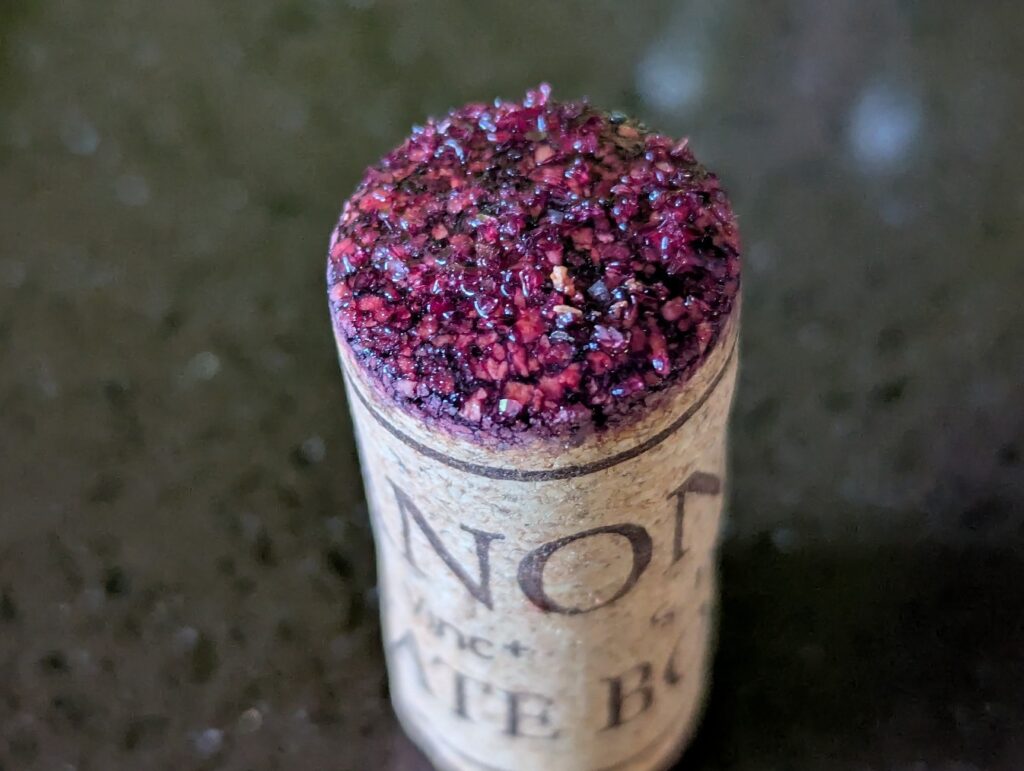
I first came across this wine last year when it was announced as a new wine at a Majestic press tasting. Since then, I’ve purchased it twice and had the chance to spend a bit more time with it, getting to understand it better on each occasion.
The wine is made by Kanonkop for Majestic as part of their Definition range. This collection is designed to represent what Majestic sees as the benchmark expressions of key wine styles from around the world, produced in partnership with respected wineries. The idea is to give customers a clear sense of what a classic version of each style should taste like.
This particular wine is from the 2021 vintage and sits at 13.5% ABV. Interestingly, when I opened the most recent bottle, I noticed a scattering of crystals on the cork (photo at end of this review). These are tartrate crystals, sometimes called wine diamonds, which form naturally when tartaric acid in the wine reacts with potassium. They’re completely harmless and tend to show up in wines that haven’t been aggressively processed or cold-stabilised. Their presence is usually a good sign that the wine has been made with a light touch.
For me, this is very much a wine that shows its best after some time. On opening, there’s a light suggestion of blackcurrant, but after about 40 minutes in a glass or decanter, the character deepens significantly. In fact, I think it drinks best on the second day. Then, it shows much more clearly, with inviting blackcurrant notes joined by a hint of soft leather and dark plum. The wine is full-flavoured and structured, with tannins that feel purposeful without being harsh.
Just a few days before opening this latest bottle, I had visited Kanonkop’s stand at a Tim Atkin’s South African wine tasting. Their Pinotage was absolutely beautiful and I also tried their own-brand Cabernet Sauvignon. I realised how close the Majestic Definition version is in quality and style.
At £15.50 as part of a mix six at Majestic, it’s a very solid choice, particularly if you’re willing to open it in advance or even let it rest a day or two. It rewards a bit of patience.














